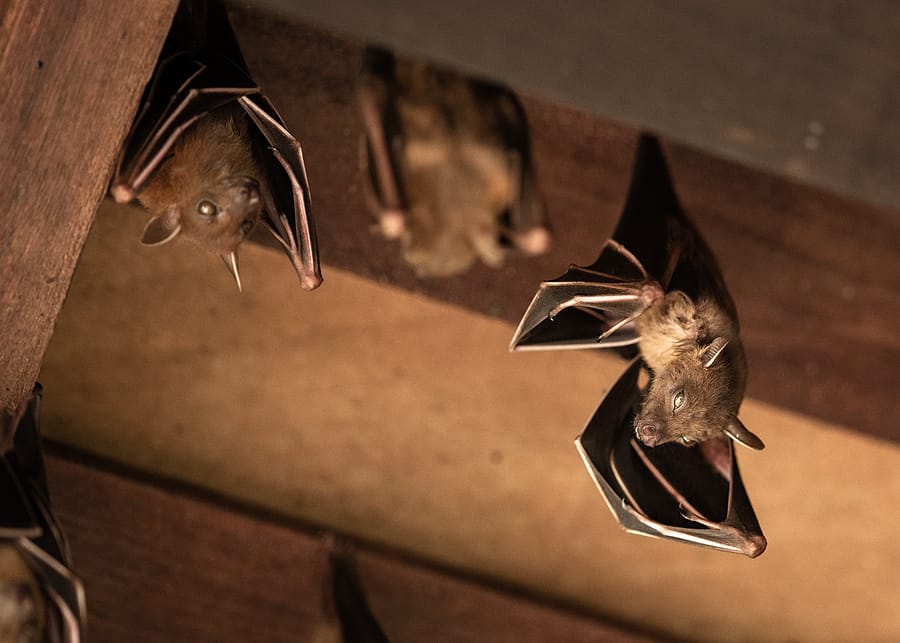READY TO GET STARTED?
REQUEST A FREE ESTIMATE
Fill out the form below or call (888) 466-7849 for a free, no-obligation estimate.

It’s already known that wildlife are out and about in the fall. With temperatures dropping, these animals are in search of a nice warm place to make their homes. Your attic is the perfect place to find refuge and search for food sources. Here are some of the most common fall wildlife that you can find roaming around and some wildlife prevention tips to ensure they don’t enter your attic.
Roof Rats
Smaller than a Norway rat, the roof rat got its name from its tendency to find shelter in the upper parts of building structures. Adult roof rats measure about 6 to 9 inches, with their tails notably longer than their heads and bodies. They feed on seeds, nuts, fruits, and berries when they are in season. Surprisingly, they will also feed on insects such as American cockroaches and brown-banded cockroaches.
Rats will usually feed at dusk and again before dawn, although they will also forage several times throughout the day and night. A common sign of rats in your attic is seeing fresh rat droppings, gnaw marks, damaged electrical wire, and obvious noises coming from above.
Bats
Nocturnal animals that are known for inhabiting dark and secluded locations, bats are a common attic invader during the fall and winter months. An adult bat can weigh less than 1 ounce or up to 3 pounds. Most bats will leave their habitat at dusk and return around dawn. Bats are an important part of the pollination process as they will feed on insects that visit flowers. They will also feed on various types of fruit that help disperse seeds.
One of the biggest concerns with bats in the home is whether or not they have rabies. While bats don’t randomly bite humans, they will bite if they feel threatened. Unfortunately, it’s almost impossible to tell if bats have rabies, so it’s better to ensure these creatures don’t enter your home at all. A major sign that you have a bat infestation is seeing bat droppings throughout your attic.
Gray Squirrels
Gray squirrels are common attic invaders as they frequently enter them seeking food and warmth. These animals are gray in color with short, thick fur and bushy tails. They are typically found in urban areas with trees which they use to nest in order to avoid predators and harvest food. Gray squirrels will eat small insects such as caterpillars and even small animals like young snakes.
Signs of a squirrel infestation include hearing noises from attics, chimneys, walls, or vents; holes in the siding; chewed wires; and even attic insulation damage. A major concern with these animals getting into homes and attics is the risk of fire from chewing through electrical wires.
If you suspect that you have one of these creatures in your attic, consider calling your local pest control company to help locate entry points, safely remove the animals with the most up to date wildlife control techniques, and prevent them from entering your house again.
Categories